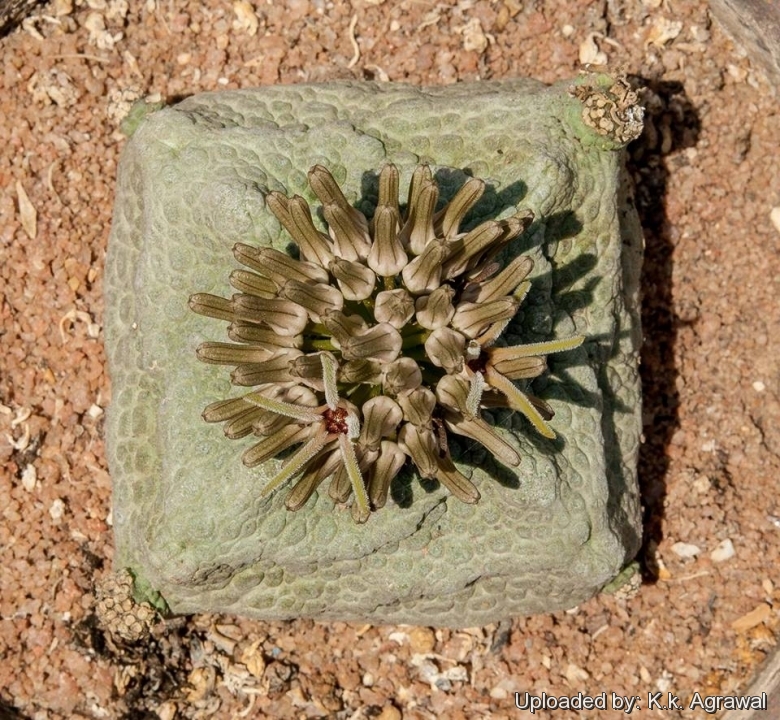
Pseudolithos cubiformis Photo by: K.k. Agrawal
Origin and Habitat: Pseudolithos cubiformisSN|12762]]SN|12762]] comes from the North East of Somalia
Habitat: It grows in grit with little water and some sun.
Synonyms:
See all synonyms of Pseudolithos cubiformis
back
Accepted name in llifle Database:Pseudolithos cubiformis (P.R.O.Bally) P.R.O.BallyCandollea xx. 41 (1965), in obs.Synonymy: 3
back
Common Names include:
ENGLISH: Cube-shaped Pseudolithos, Cube Pseudolithos
CHINESE (中文): 方型凝蹄
JAPANESE (日本語): プセウドリトス・クビフォルメ
Description: Pseudolithos cubiformisSN|12762]]SN|12762]] is a small highly succulent plant that grows into a characteristic, fairly large, granite grey, almost perfect cube. It is quite variable in shape, colour and size. It is one of the nicest species in the genus, all of which are oddballs. A very odd species indeed.
Stem: Usually single stemmed. Up to 12 cm wide and tall, basically cube shaped or with an evident four-sided figure form, tuberculate, leathery skinned, The colour vary from light green (in shaded environments) to clear olive/grey/green (in half sun) or reddish-brown (in full sun). Old plants with peduncles along some of the edges.
Roots: Fibrous.
Flower: In clusters, with greyish-Green hairy petals with a purple centre. It has the largest flowers in the genus, and like the others, the cluster of flowers are fly pollinated and smell like rotting meat.
Blooming season: It produces shoots and regularly blossoms mainly during the end of the summer in the bottom side of the plants, but may blooms during the year whenever the growing conditions are appropriate.
Bibliography: Major references and further lectures
1) Urs Eggli “Illustrated Handbook of Succulent Plants: Dicotyledons” Springer Science & Business Media, 2002
2) Hermann Jacobsen “A handbook of succulent plants: descriptions, synonyms, and cultural details for succulents other than Cactaceae” Blandford Press, 1960” Timber Press, 18/May/1999
3) Focke Albers, Ulrich Meve “Illustrated Handbook of Succulent Plants: Asclepiadaceae: Asclepiadaceae” Volume 4 Springer Science & Business Media, 2002
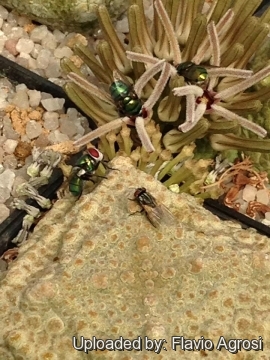 Pseudolithos cubiformis Photo by: Flavio Agrosi
Pseudolithos cubiformis Photo by: Flavio Agrosi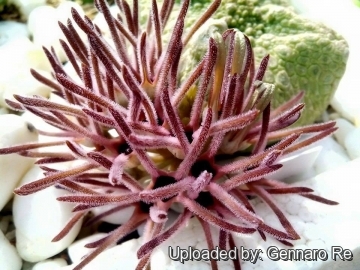 Pseudolithos cubiformis Photo by: Gennaro Re
Pseudolithos cubiformis Photo by: Gennaro Re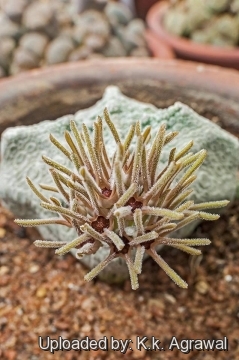 Pseudolithos cubiformis Photo by: K.k. Agrawal
Pseudolithos cubiformis Photo by: K.k. Agrawal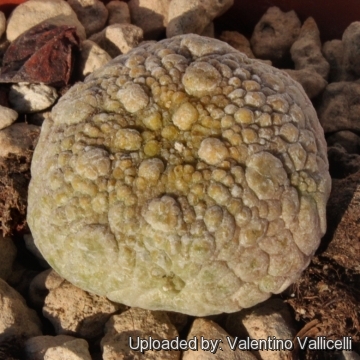 Pseudolithos cubiformis Photo by: Valentino Vallicelli
Pseudolithos cubiformis Photo by: Valentino Vallicelli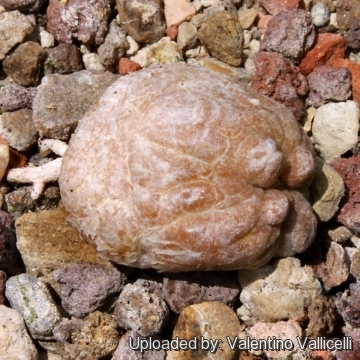 Young specimen. Photo by: Valentino Vallicelli
Young specimen. Photo by: Valentino Vallicelli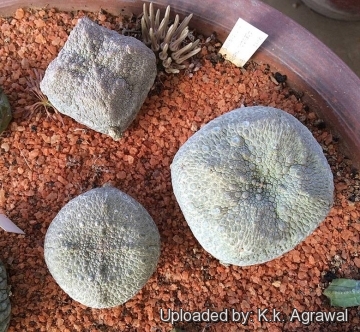 Pseudolithos cubiformis Photo by: K.k. Agrawal
Pseudolithos cubiformis Photo by: K.k. Agrawal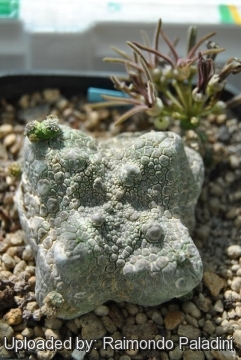 Pseudolithos cubiformis Photo by: Raimondo Paladini
Pseudolithos cubiformis Photo by: Raimondo Paladini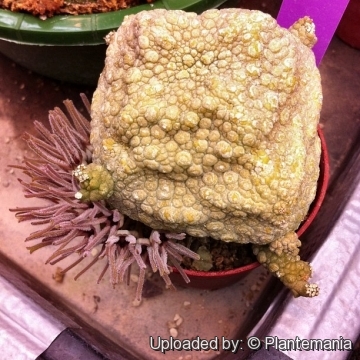 Pseudolithos cubiformis Photo by: © Plantemania
Pseudolithos cubiformis Photo by: © PlantemaniaCultivation and Propagation: Relatively easy to grow, but mistakes are costly. If rot sets in, there is practically no time, nor warning, before the plant turns to expensive mush.
It needs regular watering, especially during the hottest summer day, provide also some light watering if the green house temperatures in winter are elevated. Either excessive and very scarce watering can induce rot.
Frost Tolerance: Winter temperatures must be kept over 10° C. ( But can withstand to winter night temperature around 5° )
Sun Exposure: It take a great advantaged if grown in very strong light but sheltered from full sun.
Cultural Practices: Provide a very good ventilation. It grow quite easily and fast on its own roots. it is not difficult as commonly supposed, but inaccuracies are fatal. If rot starts the plant will almost inevitably die. This plant is a candidate for under-potting, as long as you keep it watered.
Propagation: Seeds are the only way of reproducing
Your Photos

by Valentino Vallicelli

by Cactus Art

by K.k. Agrawal

by K.k. Agrawal

by K.k. Agrawal























